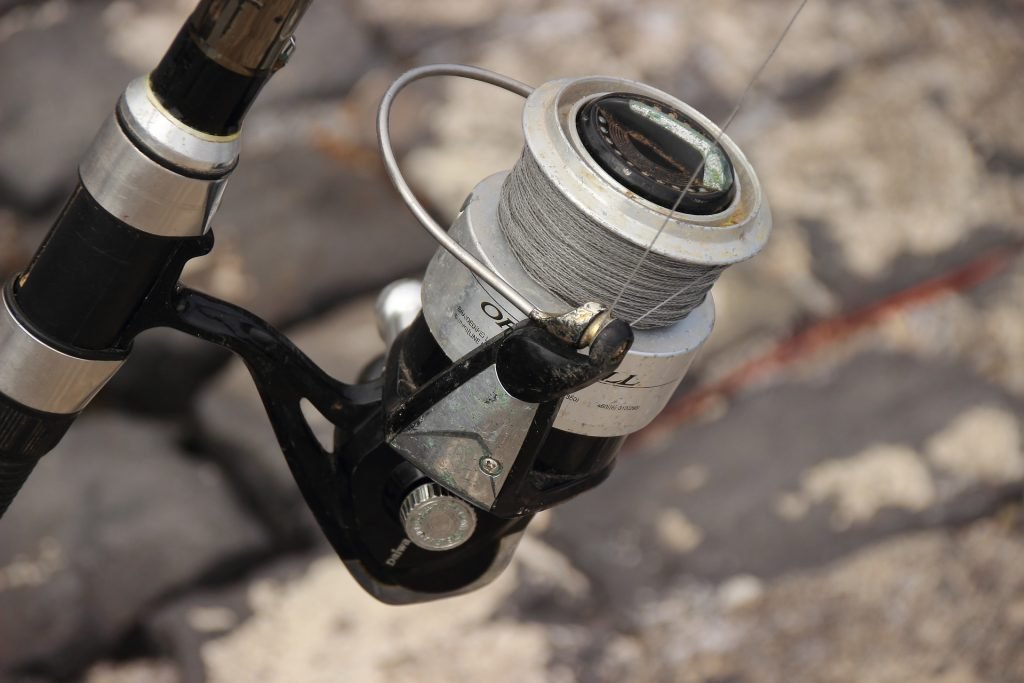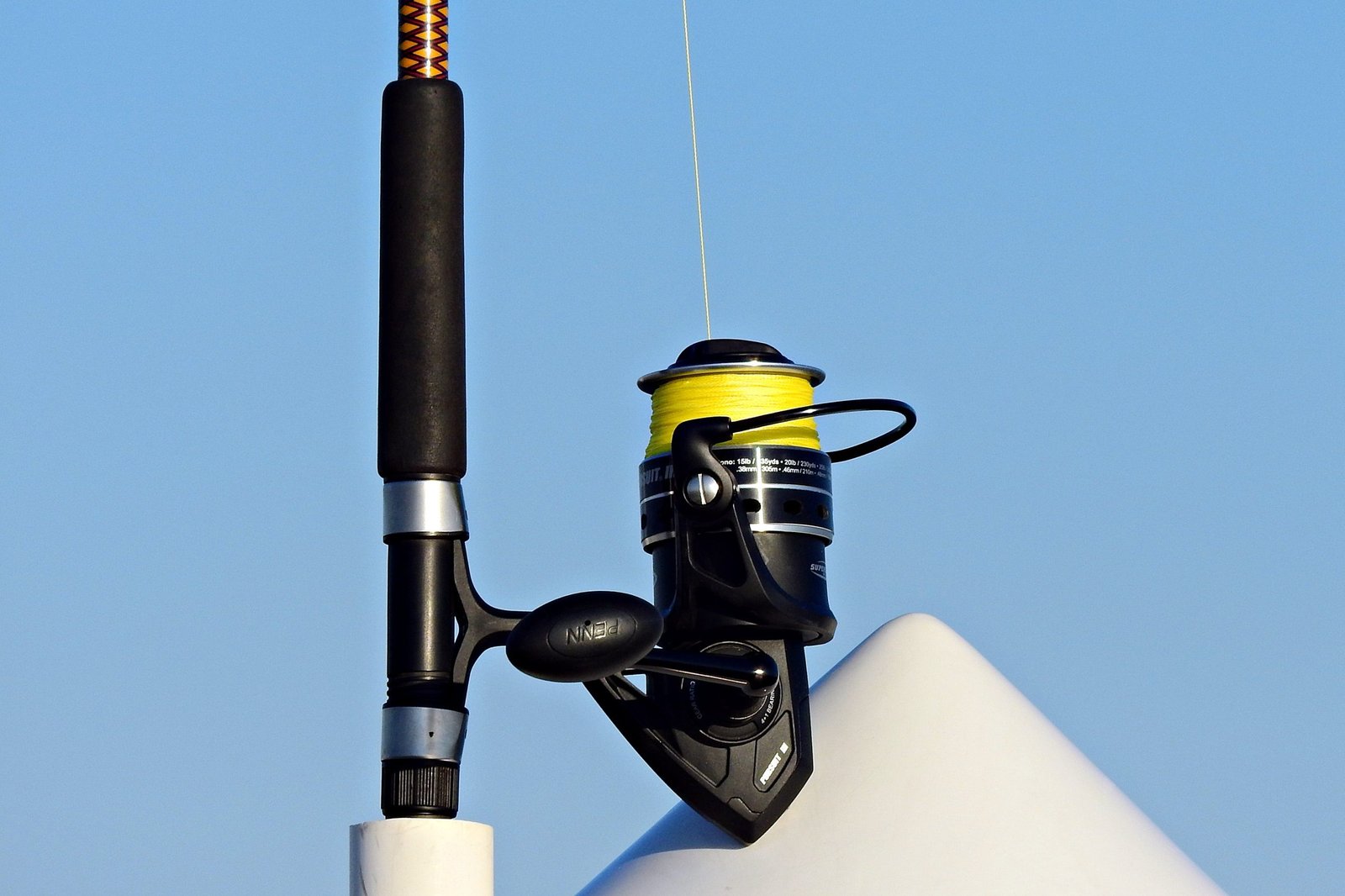
If you’ve ever overthought about what color fishing line you should use, I get you.
I’ve done it too. But, to overcome this question once and for all, let’s first assume that you’re tying you lures directly to your mainline.
In this case, line color can matter. The more you can make the line blend in, the better. That’s why translucent lines (including clear, green, and so on) are favored, and bright lines like neon green or yellow, not so much.
But for those that don’t have 70 different spools for all conditions and types of water, using a clear, preferably fluorocarbon leader is the best way to go fishing. With this, you can use any color you might have. The fish following your lure won’t see it.
I’ll say it again. If you’re not using a clear leader, it’s time to tie one now. The length depends on your rig and preferences, but a good overall length is around 5-10ft.
Well, that’s the plain and simple answer. But if you want some more info about line colors and what environments they work well in, keep reading.
Practical Insights for Anglers

Strategic Color Use for Different Fishing Locations
Inshore saltwater fishing often means clear water and cautious fish. Using a clear fishing line or a light green line can help your setup blend into the surroundings. This makes your bait appear more natural. Even with a fluoro leader on, a line that blends in the water is always welcome, as it lowers the risk of other fish seeing it.
For surf fishing, where visibility and movement are more complex, a blue fishing line can be effective. It matches the shifting colors of the sea and sky, providing camouflage. On the other hand, offshore fishing might allow for yellow lines, which are highly visible above water, making it easier to manage and avoid tangles.
Tuning Line Color to Fish Species
Different fish species have varying color perceptions. Redfish and trout are known to be more wary, so using a fluorocarbon line can be useful as it becomes almost invisible underwater.
When targeting bass, which are generally less color-sensitive, you can use more visible lines like green or blue. For tuna and other big game fish, a combination of braided line with a fluorocarbon leader may provide durability and low visibility needed for successful hookups.
Application in Fishing Styles and Techniques
Different fishing techniques require different line colors and types. For trolling, where the line needs to stay out of the way of the propeller and other gear, a yellow line or other bright line color can be beneficial.
In vertical jigging, a clear fluoro line allows for subtle presentations. Monofilament lines are often used for cast fishing due to their stretch and visibility. It makes them suitable for various styles.
Pro Tips for Maximizing Line Performance
Keeping your fishing line in top condition can significantly improve your fishing success. Always check for nicks and frays, especially when using braided line. Re-tie your knots regularly to prevent breakage and consider using a leader line matched to your fishing environment.
Fluorocarbon and monofilament lines tend to absorb water over time, so it’s good practice to replace them regularly to maintain their strength and flexibility. When spooling, make sure the line is tight and evenly distributed.
Understanding and Exploiting Fish Color Perception
Fish see colors differently based on their environment. Trout and bass have color vision that can detect shades of red and green, which means your line color choice can impact their behavior.
In clearer waters, using more transparent lines like fluorocarbon lines helps avoid spooking fish. In murky waters, where sight is limited, the line color may be less critical. But subtle differences in red and green could still play a role in attracting or not deterring certain species.
Frequently Asked Questions
What advantages does colored fishing line provide in saltwater environments?
Colored fishing lines can be easier to see above water, helping you keep track of my line. This can be useful when multiple lines are in use. Some colors blend better underwater, making the line less visible to fish.
Can fish see colored fishing line under saltwater conditions?
Fish can see certain colors in saltwater, especially in clear, shallow waters. Colors like green and blue blend better with the underwater environment. This makes the line harder for fish to detect, which can increase your chances of catching something.
How does water clarity affect the choice of fishing line color for ocean fishing?
Clear water calls for a more transparent or lightly tinted line, like light blue, which blends in well. Murky water might allow for darker lines. Adjusting the color based on water clarity helps avoid spooking fish and increases your catch rate.
Are there specific colors of fishing line that are more effective for saltwater species?
Yes, green is often recommended for inshore fishing where the water is shallow and has vegetation. Blue works well for deeper offshore fishing. These colors match the natural environment, making your line less noticeable to fish like trout, bass, and others.
Does the color of braided fishing line influence catch rates in saltwater fishing?
Braided lines can be very visible, so using colors like green and blue can help. Some anglers, like me, prefer high-visibility colors above the water and attach a less visible leader below. This can balance the need for visibility and stealth.
Why might an angler prefer a certain color of fishing line when fishing in the sea?
I might choose a certain color to blend with the water, avoid spooking fish, or see the line better. Preferences can also be based on habits and successes with certain colors in the past, making some colors a personal favorite for specific conditions.
What are the benefits of using monofilament lines over braided lines in saltwater?
Monofilament lines have several advantages over braided lines in saltwater. One of the main advantages is that they are more forgiving, which means they are less likely to break when fighting a fish. Additionally, monofilament lines are more buoyant than braided lines, which can be helpful when fishing topwater lures.




